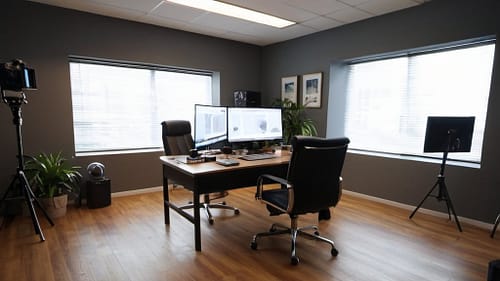Share This Story, Choose Your Platform!
Ever since the technology was made available, a lot of research has been done by web experts to find out just how long the average person stays on a website.
The data usually stays just about the same during every survey.
Most visitors to a site “bounce,” or leave, within the first 3 to 15 seconds.
Why?
The site takes too long to load.
We live in an impatient world. In the past, when people had slow modems, they were more likely to be patient. Now that practically everyone has high-speed internet, they expect pages to load in seconds. If a page takes more than 3 seconds to load (because it’s heavy on graphics, perhaps), a user won’t wait – they’ll just click away.
An experienced web designer will ensure that nothing in a website’s coding or content will impact how quickly a page loads.
The site doesn’t catch their eye.
Site design is important during those first 3 to 15 seconds. A site should look “pretty” – like it actually has been designed with some care.
There is an art to this, since websites have to look equally appealing on large PC screens, tablets, and small smartphone screens.
The right images must be at the top of the screen, or the “top of the fold.” Video is popular in certain “out of the box” templates that DIY web builders offer, but they slow down site load speed and experienced web designers do not use them.
What does catch a user’s eye?
- Striking images that look “real” – not as if they came from a stock photo seller
- Easy-to-read text, not fancy curlicue fonts
- Professional-looking rather than amateurish graphics
- Custom designs rather than obvious templates. (Take a look at ten websites in the same business niche and you’ll see that 8 out of 10 of them use the same template design)
The site isn’t what they expect.
Search engines index and rank for certain keywords. If your site has been optimized for the wrong key words, you may find that your site gets a lot of visits from people who can tell immediately that you don’t offer what they want, and they will bounce.
But let’s say that the site does catch their eye, so they stay longer than those first 3 seconds. Then they start looking around for the information they are seeking – whether it’s the menu for a restaurant; or the opening and closing times for a business, especially on holidays; how much an item costs and if it’s in stock at a certain store; and so on.
Can they find that information quickly?
Remember, people are impatient.
A site should not sacrifice ease of navigation for “looking pretty.” Yes, it’s important to have a clean design, but what will that avail you? Your visitor may stay longer than 3 seconds because of the way the site looks, but they will leave within 15 seconds if they can’t find what they want very easily.
Ease of navigation is essential.
Your potential clients or customers must be able to find what they’re looking for within 15 seconds.
Contrary to what some “out-of-the-box” templates would have you believe; a website does not have to consist of just one page with all the information jam-packed on it. Users are quite used to tapping on a responsive menu bar and looking for other pages of a website that will have the information they need.
And a multiple-page website is essential when it comes to ranking the site for multiple search terms for SEO purposes!
Content is king.
Content is extremely important, for a variety of reasons.
First off, search engine algorithms can actually detect “well-written” content. (At least, well-written by their standards!) Search engine algorithms not only index every word and in particular key words (phrased used 3, 4, or 5 times on a page), but also penalize or reward “readability.”
But while search engines – well, let’s face it, Google – must be satisfied, so must your visitor!
The content they read must be clear, instructive, written in an appropriate voice and free from typos or grammatical errors.
If not, even though they’ve stayed for longer than 15 seconds, chances are they will not convert into customers, or clients. Read more about how to write content for a website (that doesn’t suck) here.
Summary
As you can see, a successful website – one that will bring you business – is the sum of all of its parts. They must all work in concert for your success. This all sums up how critical it is to hire a professional website designer to bring all of these items together for a website that converts visitors to customers and gives you the highest return on your investment possible.


